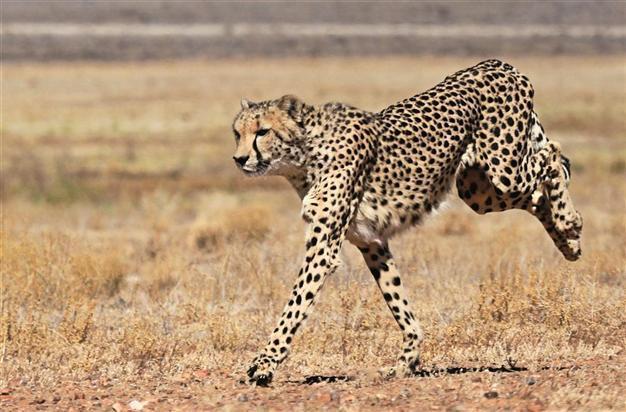Cheetahs still in race to survive but may die off
JOHANNESBURG - Agence France-Presse

According to big cat NGO Panthera, cheetahs have disappeared from 77 percent of their original territory in Africa. They may disappear by 2030. AFP photo
The cheetah, the world’s fastest land animal, survived mass extinction during the last ice age 10,000 years ago. But it has taken just the last few decades for man to place the hunter on the endangered species list, with experts warning it could disappear from the wild by 2030.Unlike rhinos and elephants, the cheetah is not a target in Africa’s poaching bloodbath. But it is the only big cat to adapt poorly in wildlife reserves as its natural habitat is increasingly wiped out.
“Cheetahs don’t do well in protected wildlife reserves due to increased competition from other larger predators, such as lions and hyenas, which thrive in protected areas,” Laurie Marker of the Cheetah Conservation Fund in Namibia told AFP. “Most protected areas are unable to maintain viable cheetah populations,” she added.
Barely 10,000 cheetahs
In the early 20th century, the global cheetah population was around 100,000 with populations throughout Africa, the Middle East and several Asian countries.
There are barely 10,000 in the wild today, in Africa, and a small population in Iran which is critically endangered.
According to big cat NGO Panthera, cheetahs have disappeared from 77 percent of their original territory in Africa.
The International Union of the Conservation of Nature lists the southern African species as vulnerable.
“The main limitation to the survival of the species in the wild is reduction and fragmentation of habitat as well as human wildlife conflict,” said Marker. If no special measures are taken, wild cheetah will disappear by 2030, according to Panthera.
















